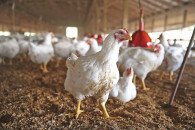Banks to post profit for third quarter
It is attributed to surge in policy rate, investment in govt debt

Pakistan’s banking sector is continuing to flourish, with net profits expected to increase for the third consecutive quarter ending on March 31, 2023.
The success of the sector can be attributed to the 400 basis points (bps) surge in the benchmark policy rate and investment in risk-free and high-yielding government debt securities. In terms of profit-before-tax (PBT), this growth marks the tenth successive quarter of profit for banks, a trend that is expected to continue.
JS Global Head of Research Amreen Soorani, in a commentary titled ‘Banks: 1QCY23 to mark another quarter of sequential earnings growth’ on Tuesday said, the monetary tightening cycle and consistent asset growth are predicted to improve core income by 4% on a quarter-on-quarter basis and 64% on a year-on-year basis in the first quarter of 2023.
“We expect Islamic banks to outperform peers. We expect higher growth in Investments (in government debt securities), as compared to advances (to private sector), that may drive the asset growth,” said Soorani.
In addition to the asset re-pricing effect from previous policy rate hikes, earlier KIBOR (Karachi inter-bank offered rate) movement prior to the January 2023 (+100bp) and Mar-2023 (+300bp) policy rate hike is expected to reflect in the quarter’s revenue growth. Moreover, a gradual shift of partial corporate loans to one-month KIBOR may also add to the growth, she said.
The brokerage house has presented the earning preview for ten leading banks listed at the Pakistan Stock Exchange (PSX), with Habib Bank (HBL), United Bank (UBL), MCB Bank (MCB), Allied Bank (ABL), and Meezan Bank (MEBL) expected to announce dividends for shareholders in the quarter as well. The banks are scheduled to start reporting profit or loss accounts for the quarter under review form this week.
The higher revenue growth is predicted to outpace the increase in deposit and borrowing costs this quarter, with the expansion of current account mix likely to continue. The quantum of borrowing is also likely to increase, which was raised by the sector during the first quarter of 2023 to partially fund investments in debt securities. Additionally, the earlier asset yield movement may also expand the spread over borrowings this quarter.
“For perspective, prevailing spread between shorter tenor (three to 12-month T-bills) secondary market yields and borrowing rate averaged to 200 basis points during 1QCY23, which was higher than historical average of 150 basis points,” she said.
Despite the predicted net earnings growth, book value growth may be restricted owing to unrealised losses on available for sale investment segment amid an increase in investment yields. This trend may also restrict the adequacy ratio increase. The higher revenue growth is also expected to result in a slight increase in cost to income ratio amid higher inflation trends. During the quarter under preview, the three-year secondary market yields have inched up by 250 basis points, while five-year yields have increased by 40 basis points.
On the credit cost front, the State Bank of Pakistan (SBP) has recently notified an extension of mandatory implementation of IFRS 9 to CY24, versus CY23 previously. While in the same notification, the option of voluntary implementation was reiterated by the regulator, “we would need to see if banks reverse any impact of the reporting standard implementation on equity and adequacy ratios disclosed in CY22 financials.” The credit cost is expected to be around 100 basis points (annualised), with some impairment on international bond investments given Fitch’s rating downgrade for Pakistan in the first quarter of 2023.
The research house expects all the ten banks under coverage to maintain gross advance-to-deposit ratio (ADR) above 50%, while higher tax on income from federal government securities for banks reporting less than 50% ADR has been removed for tax year 2024, which is CY23. Accordingly, it expects effective tax rate of 43% with corporate tax rate at 39% and super tax at 4% from CY23.
On the flip side, “we expect operating expenses growth to continue amid higher inflation trend this quarter, resulting in a slight increase in cost to income ratio. On a sequential basis, we expect 5% higher operating expenses, taking year-on-year growth to 28%. As a result, we expect cost to income ratio to increase to 45%, up 78 basis points on quarter-on-quarter basis.”
Published in The Express Tribune, April 19th, 2023.
Like Business on Facebook, follow @TribuneBiz on Twitter to stay informed and join in the conversation.


















COMMENTS
Comments are moderated and generally will be posted if they are on-topic and not abusive.
For more information, please see our Comments FAQ